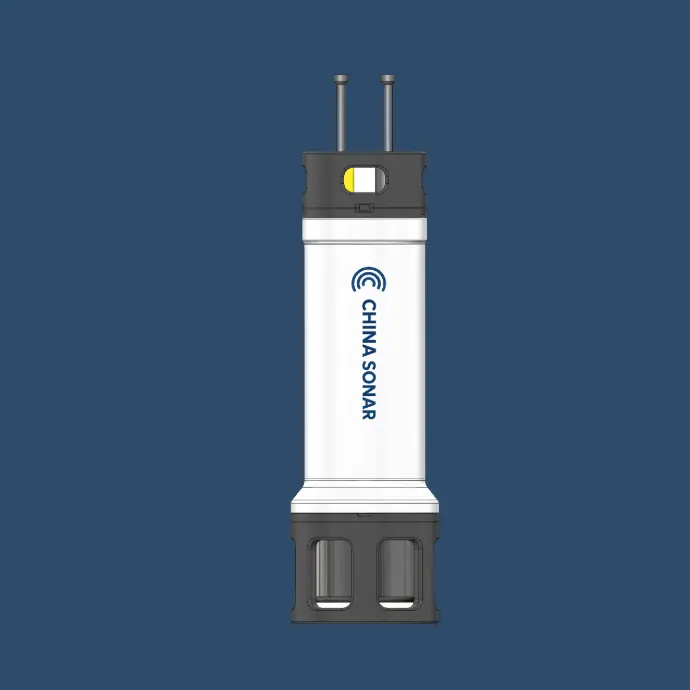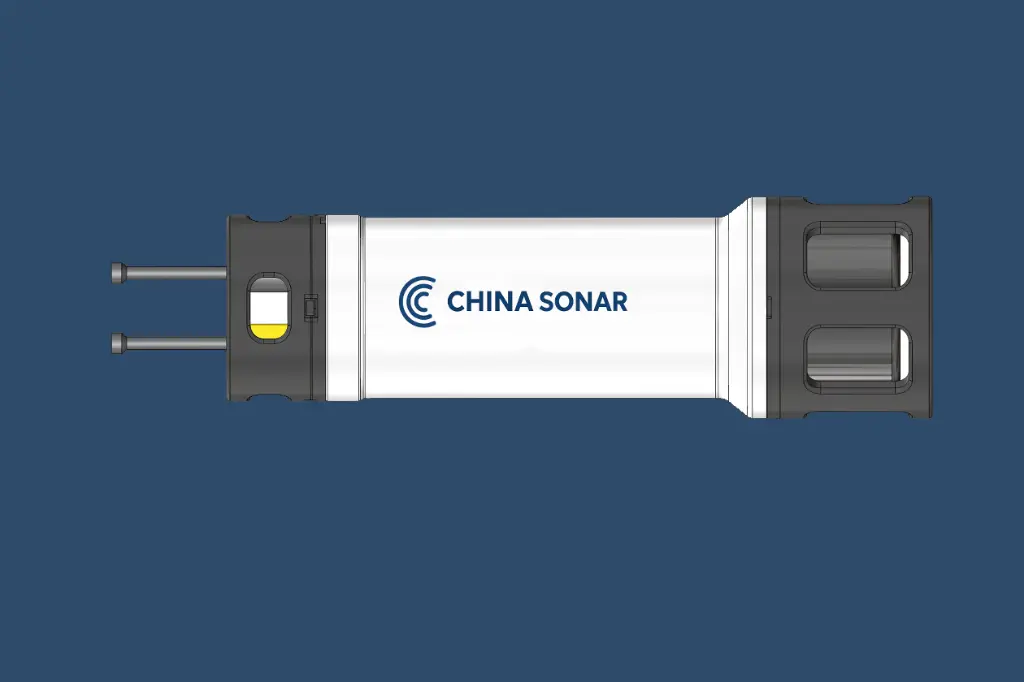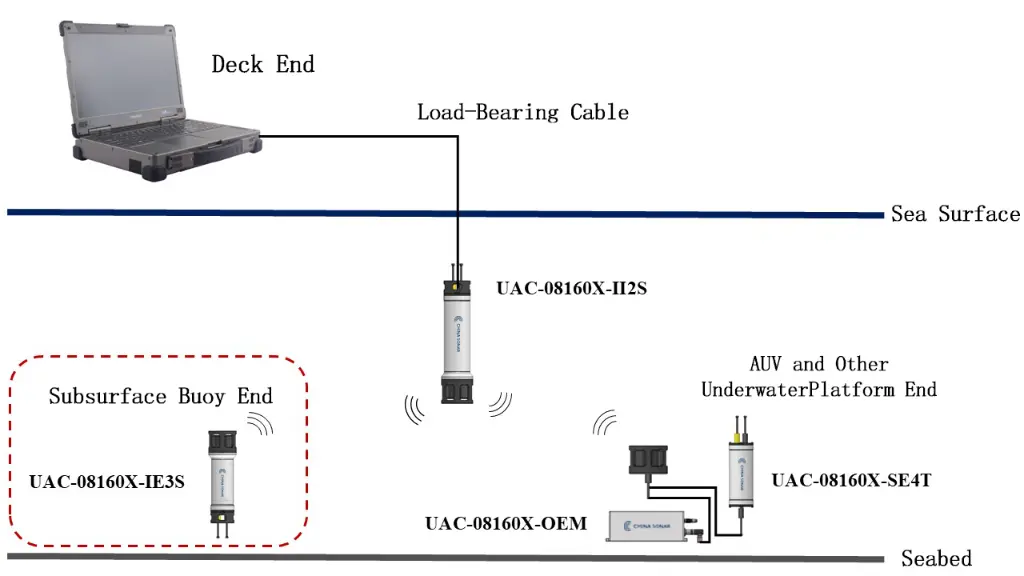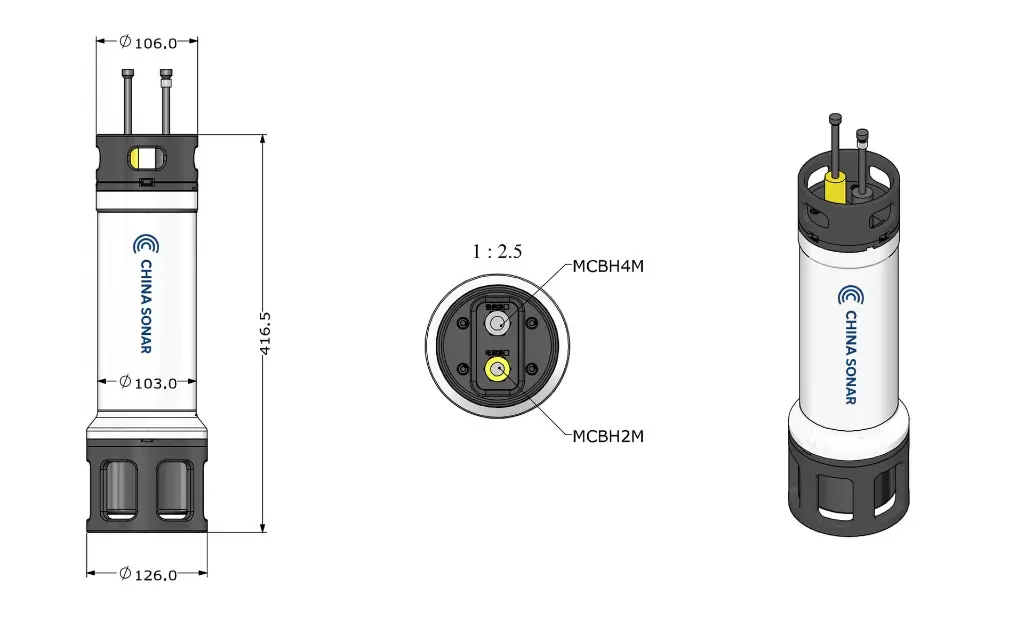UAC-08160X-IE3S
Underwater Acoustic Communication
Key Features
- Deep-Sea Deployment – Operates at depths up to 4000 meters, covering the majority of subsea communication needs in the South China Sea and beyond.
- Durable Construction – Built with a monolithic 2205 stainless steel housing, offering superior corrosion resistance and long service life.
- Flexible Power Options – Externally powered, with a user-configurable battery compartment to adapt to different mission requirements.
- Reliable Long-Range Communication – Supports up to 10 km underwater communication with a maximum data rate of 4 kbps (BER 10⁻⁴).
- Standard Protocol Support – Equipped with an RS232 serial port and compliant with standard control protocols, with technical support available for custom protocol development.
Specifications
Applications
· Seabed observation stations
· Buoy communication systems
· Underwater sensor networks
· Ocean monitoring & data transmission
· Offshore engineering and long-term research missions
Application Diagram
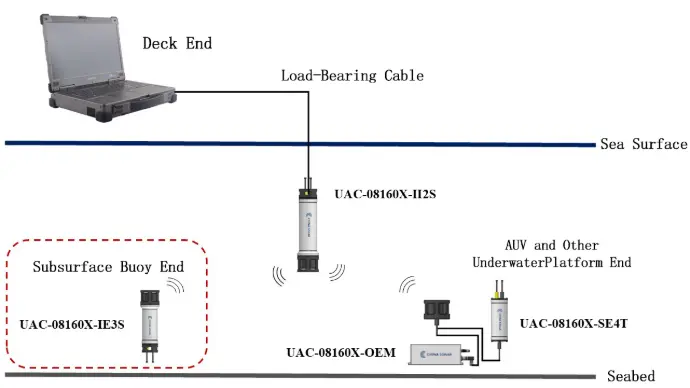
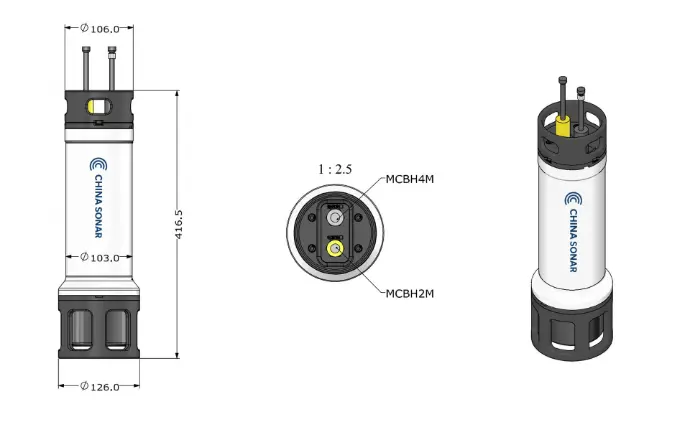
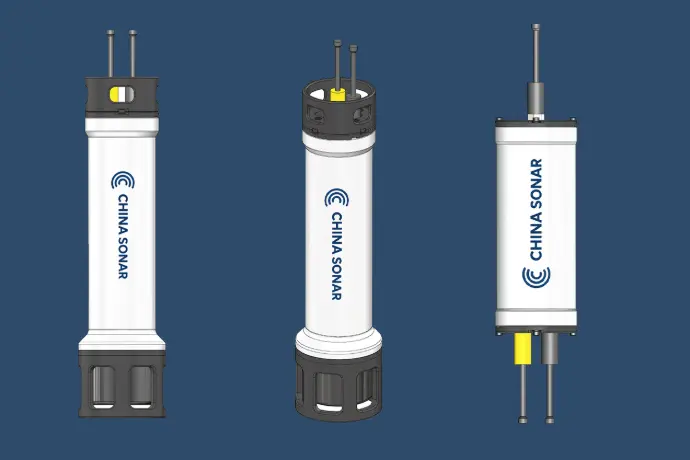
Explore the UAC-08160X Series
The UAC-08160X Series includes the portable II2S, the 4000 m-rated IE3S, the 6000 m deep-sea SE4T, and the highly integrable OEM system solution. Whether for shallow-water trials, coastal monitoring, or deep-sea engineering and system integration, the UAC-08160X Series delivers reliable performance for diverse underwater acoustic communication needs.
Related Products
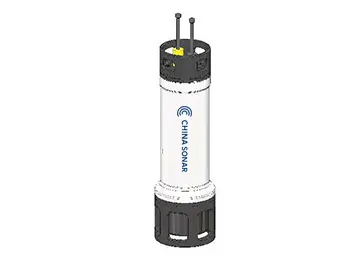
UAC-08160X-II2S
Frequency: 8kHz-16kHz
Communication Distance: 10km
Communication Rate:100-4kbps
Bit Error Rate:
10⁻⁴
Operating Range: 300m
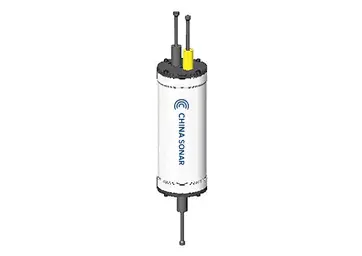
UAC-08160X-SE4T
Frequency: 8kHz-16kHz
Communication Distance: 10km
Communication Rate:100-4kbps
Bit Error Rate:
10⁻⁴
Operating Range: 6000m
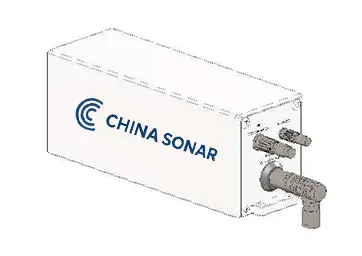
UAC-08160X-OEM
Frequency: 8kHz-16kHz
Communication Distance: 10km
Communication Rate:100-4kbps
Bit Error Rate:
10⁻⁴
Operating Range: ≤6000m
How the UAC-08160X-IE3S Works
The UAC-08160X-IE3S is a high-performance underwater acoustic communication device engineered for deep-sea and mid-water subsea communication where radio frequency (RF) and optical signals are ineffective. It enables robust, long-range transmission as part of advanced underwater acoustic modems.
Signal Conversion & Modulation
- Data from buoys, autonomous underwater vehicles (AUVs), subsea sensors, or oceanographic platforms is converted into digital form.
- The system supports dual-mode modulation (MASS / SC-MPSK), loading the digital data onto acoustic carriers in the 8–16 kHz frequency band, which is optimized for underwater acoustic communication.
Transmission & Propagation in Water
- Once modulated, acoustic wave transmission is emitted into the water medium. These signals can reach up to 10 km under optimal conditions, with data rates between 100 bps and 4 kbps and a bit error rate (BER) around 10⁻⁴.
- The device operates in half-duplex mode, switching between transmit and receive to conserve power and manage communication flow.
- Deep-sea propagation effects—such as attenuation, multipath reflections from the seabed and surface, pressure (depth), temperature, and salinity variations—are mitigated through advanced signal processing and robust hardware design in the UAC-08160X-IE3S underwater acoustic system.
Reception & Data Recovery
- A hydrophone captures incoming underwater acoustic signals.
- Received signals undergo demodulation to recover the original digital data, whether for telemetry, sensing, or command/control.
- The system ensures high integrity and low error rates in subsea sensor networks, underwater observatories, or long-term research deployments.
Operational Parameters & Deployment
- Maximum working depth: rated to 4000 meters, with design margin for deeper deployment, enabling use in deep-water oil & gas, cable-and-pipe laying, and oceanographic research.
- Interfaces: RS-232, RS-485, RS-422 for control and data link, allowing integration with existing underwater communication systems or custom underwater acoustic modem networks.
- Power & Modes: Low standby power consumption, higher power during transmission, with adjustable power levels for varying mission profiles.
Typical Application Scenarios
- Seabed observation stations and deep-mid water moorings.
- Buoy communication systems and data relays.
- Underwater sensor networks for environmental monitoring.
- Offshore engineering projects, renewable energy platforms, and long-term oceanographic research vessels.
- Subsea cable and pipeline monitoring in marine communication networks.
